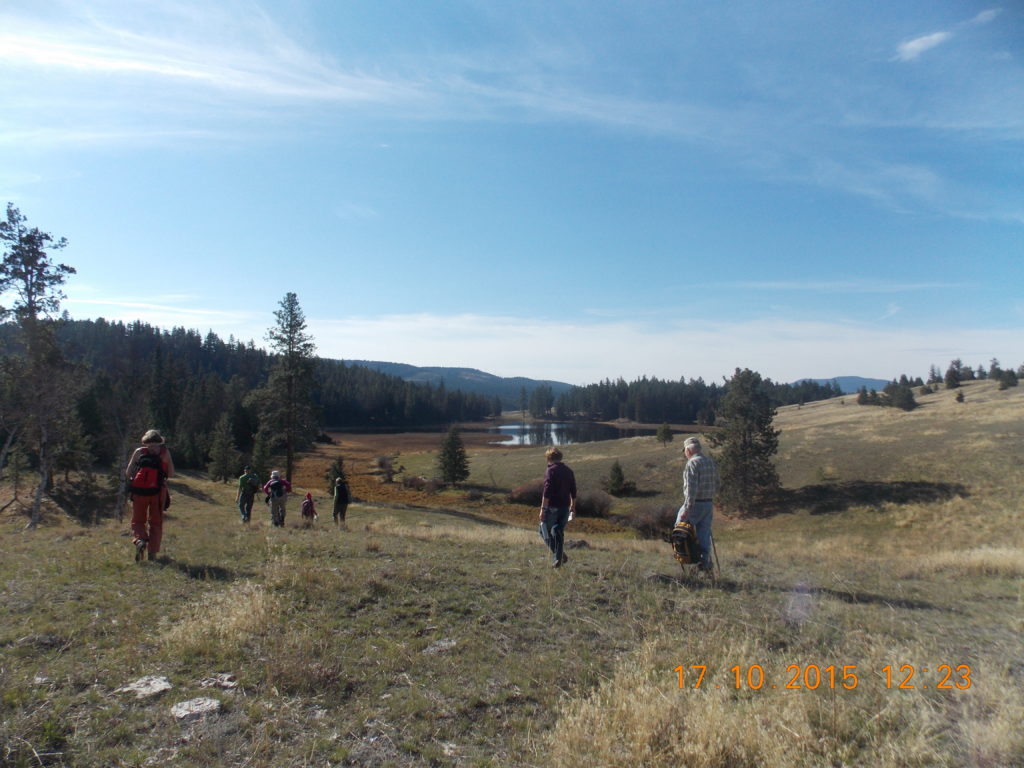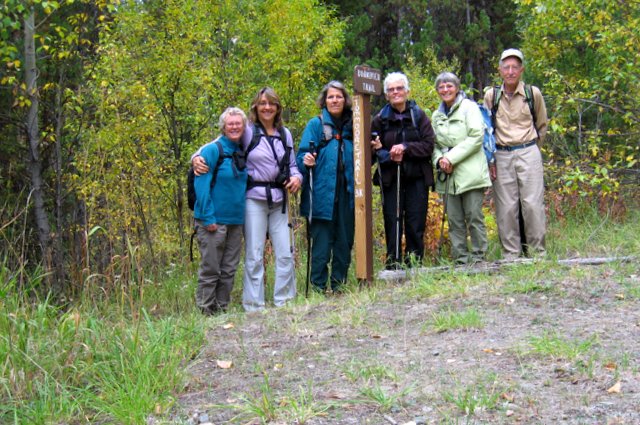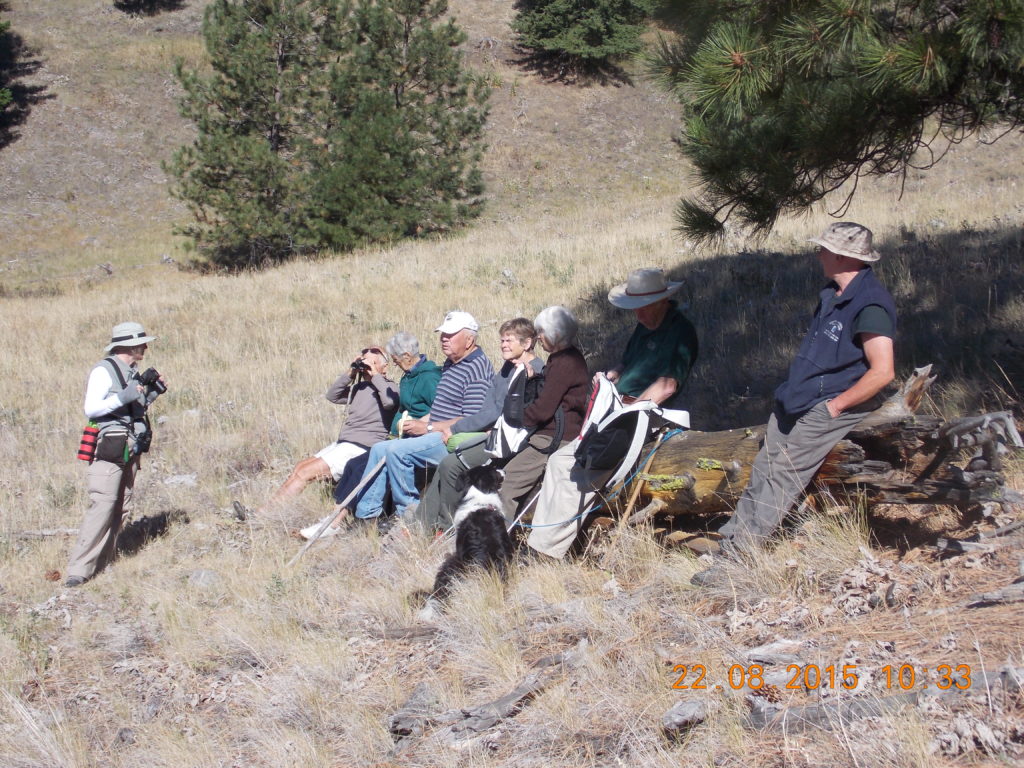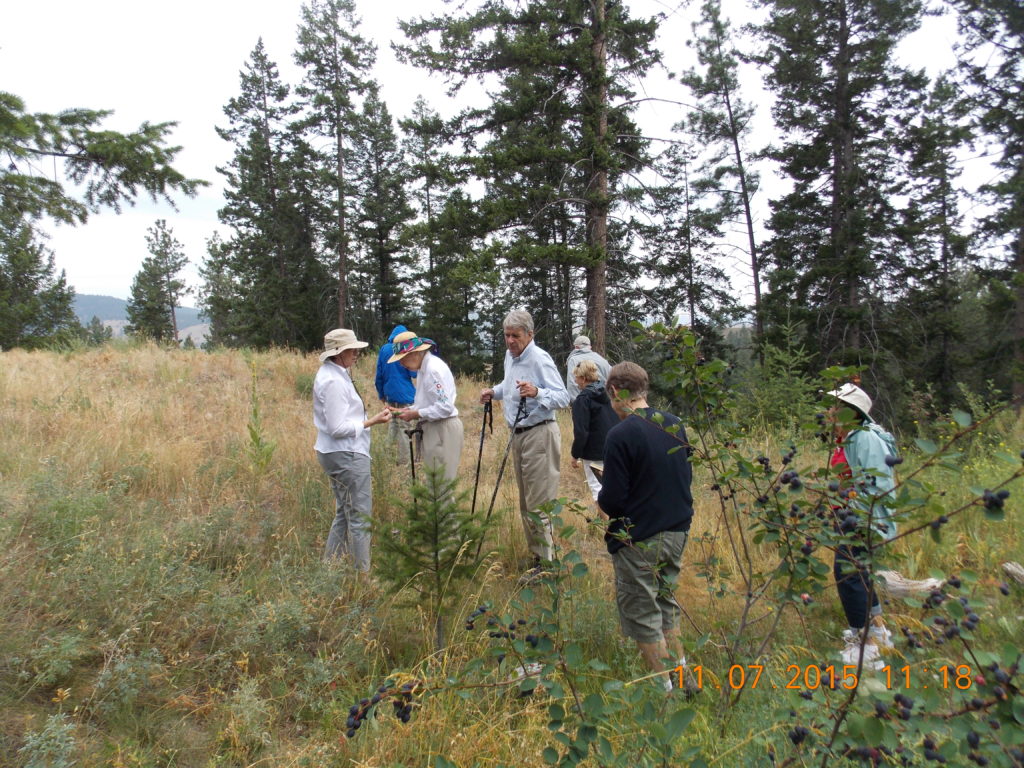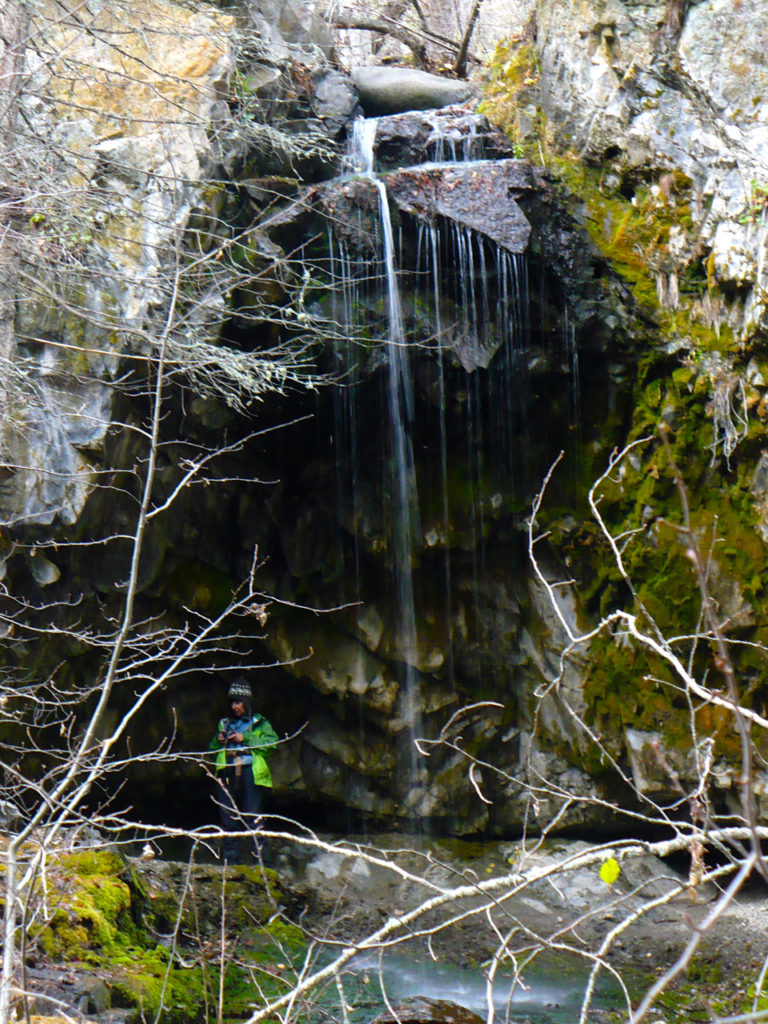
Vermilion Forks Field Naturalists’ Nov. 7th field trip took us to Cawston, where we hiked to Barcelo Falls and beyond. Six of us, led by Rika Ruebsaat, walked through aromatic sagebrush to reach the entry to Barcelo Canyon, a path that was covered with a layer of golden aspen tree leaves as we began our journey, and became rock-strewn as we continued. The trail is a 4 km. gentle incline that runs alongside Barcelo Creek, which is but a trickle at the moment. It took us 1 ½ hours to reach the waterfall, a picturesque setting, despite the minimal water flow. We explored a little behind the falls, then sat and enjoyed our lunch. We needed the extra energy to climb higher, along a steeper trail that leads to grasslands and a viewpoint overlooking the valley floor to the south. On our descent we noticed a small section of volcanically created columns, where basalt has contracted while cooling, after already solidifying – this is identifiable by the characteristic vertically-hexagonal columnar jointing.
Although we were prepared for rain, we were thankful to have nary a drop. The day was dry, calm and mild, while our 4 hours on the trail were invigorating, interesting and good fun!


